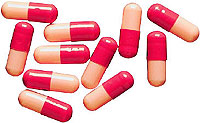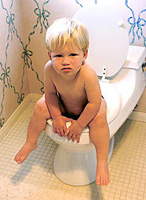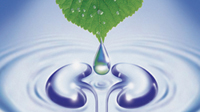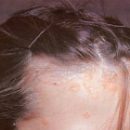What is cystinuria? As manifests itself and how this state is treated? What kind of healing diet should be applied? Read in this article.
Content
Cystin is a product of methionine amino acid exchanging. Two main causes of increasing cystine concentration in the urine can be distinguished: excessive accumulation of cystine in kidney cells and cystine suction disorders in renal tubules. Cystin accumulation in cells occurs as a result of a genetic defect. This exchange violation is called cystinosis. The intracellular and extracellular accumulation of cystine crystals is detected not only in the tubules and the interstics of the kidney, but also in the liver, spleen, lymph nodes, bone marrow, cells of peripheral blood, nervous and muscle tissue, other organs.
Manifestations of cystinuria
The disease is manifested as inflammation in various organs due to irritation by their products of cystine exchange (in particular, as gastritis, inflammation of the duodenum, ulcerative disease, pyelonephritis, inflammation of the bladder, biliary tract).
Treatment of cystinosis
If a child is suspected of a cystinuria (in the urine has increased the increased content of cystine), and in his family there are cases of urine and biliary diseases - need dietherapy.
 Treatment of cystinosis and cystinuria includes a diet, high-quality regime and drug therapy, aimed at staging of urine and improving the solubility of cystine.
Treatment of cystinosis and cystinuria includes a diet, high-quality regime and drug therapy, aimed at staging of urine and improving the solubility of cystine.
The diet is based on the restriction of the introduction with the food products of the amino acid of methionine, which is the predecessor of cystine. For this, cottage cheese, fish, cheese, mushrooms, egg whites are completely excluded. All other animal proteins are allowed to eat only in the morning hours, a vegetarian table is recommended at lunch and in the evening. This is due to the fact that cystine accumulates in the body in the evening and night hours. Since methionine is needed to grow a child's growing body for growth, long-term use of a strict diet is impossible, so after 4 weeks from the start of diet therapy, the child's diet expands and approaches the usual, but is characterized by the stringent exception of fish, cottage cheese and eggs. The amount of fluid should be at least 2 l / day, it is especially important to take fluid before bedtime. For urine suffering, a citrate mixture is used, sodium bicarbonate solutions, cells, alkaline mineral water.
In addition to diet food, pharmacological preparations are used — Vitamins (pyridoxine, ascorbic acid), as well as sodium salts. In the period of exacerbation of the disease, a vegetarian (potato-vegetable) diet with the complete exception of animal proteins is applied to 2—3 weeks.
Exemplary menu for exacerbation
First breakfast: potato mashed potatoes with salad of apples, carrots, cabbage, sour cream; coffee.
Second breakfast: boiled potatoes with onion, fastened with vegetable oil; Infusion of Shipovnika.
Lunch: vegetable soup, vegetable stew, compote.
Halfoon: Apples, Marshmallow.
Dinner: Vinaigrette, Pie with jam, fruit juice.
Daily — White bread, butter.
Fruit juices are shown, mineral waters («Smirnovskaya», «Slavyanovskaya», «Borjomi», «Naphtuya») in the afternoon and at night for urine suffering, which prevents the loss of cystine in the form of salts.
To increase the solubility of cystine and the prevention of crystallization, penicillamine is prescribed. Since penicillamine is inactivating pyridoxine, vitamin B6 (pyridoxine), vitamin A and vitamin E is prescribed. Antibacterial therapy is needed when infection. During cystinosis, the kidney transplantation is successfully used, which is carried out until the development of the last stage of chronic renal failure. Kidney transplantation allows you to significantly increase the life of patients — up to 15–19 years, however, the deposition of cystine crystals is also observed in the graft, which ultimately leads to the defeat and transplanted kidney.
In most cases, with appropriate mode, diet and drug therapy, it is possible to achieve a rack normalization of the corresponding indicators in the urine. In the absence of treatment or in its ineffectiveness, the most natural outcomes of the Disometabolic Nephropathy are the urolithiasis and inflammation of the kidneys. The most frequent complication of the disometabolic nephropathy is the development of the infection of the urinary system, primarily pyelonephritis.









